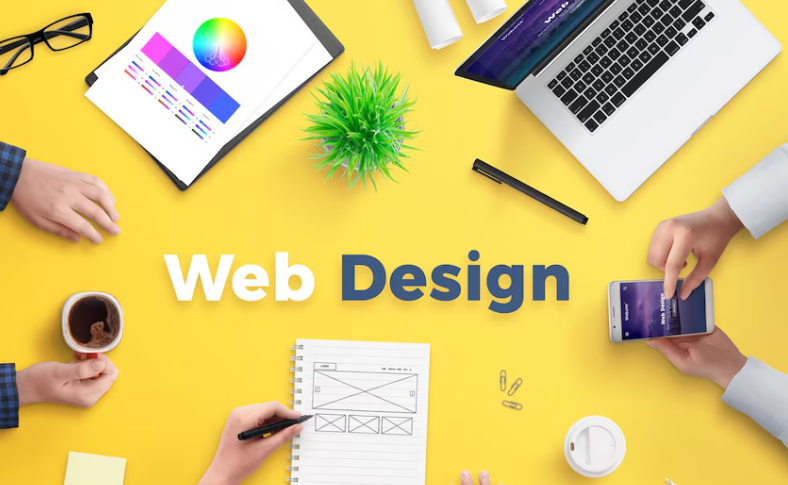Is Your Website Design Pushing Customers Away?

In today’s hyper-competitive digital landscape, your website often acts as the front door to your business. Whether you’re running a small local shop or a global enterprise, your online presence can significantly influence how potential customers perceive your brand. But what if your website is doing the opposite of what it’s meant to do? What if it’s actually driving visitors away?
The truth is, poor Website Design and Development can be one of the most overlooked reasons behind low engagement, high bounce rates, and lost sales. Let’s explore how a flawed design can repel customers, and what you can do to ensure your site becomes a magnet for engagement and conversions.
First Impressions Matter—A Lot
You only get one chance to make a first impression. Research shows that it takes less than 0.05 seconds for users to form an opinion about your website. If your design looks outdated, cluttered, or hard to navigate, visitors are likely to abandon it before they even understand what your business offers.
Modern users expect a sleek, professional interface with a clean layout, fast load times, and intuitive navigation. If your site lacks these features, they may associate poor design with a lack of credibility or trustworthiness.
Common Website Design Mistakes That Drive Customers Away
Let’s break down the most common web design flaws that could be costing you valuable leads and conversions.
1. Slow Load Times
No one likes to wait. In an age where speed is everything, websites that take more than three seconds to load can lose nearly half their visitors. Even if your content is stellar, a sluggish website undermines your entire user experience.
Optimize images, use reliable hosting, and minimize unnecessary scripts to ensure your website runs smoothly and quickly.
2. Mobile-Unfriendly Design
More than half of all web traffic comes from mobile devices. If your website isn’t responsive or doesn’t function properly on smartphones and tablets, you’re alienating a massive portion of your audience. A mobile-optimized site should adapt fluidly to different screen sizes and maintain usability across all devices.
3. Confusing Navigation
Your customers should not need a map to find what they’re looking for on your site. Complex menus, unclear buttons, or poor information architecture can frustrate users and lead them to abandon their journey. Navigation should be simple, intuitive, and designed with the user in mind.
4. Cluttered Layout and Poor Visual Hierarchy
Your website should guide users naturally toward important information, calls to action, and conversion points. If everything screams for attention—flashing banners, too many fonts, or disorganized content—users may become overwhelmed and leave.
Whitespace, contrast, and clear headings can create a better flow and improve user engagement.
5. Weak Calls to Action (CTAs)
A great website doesn’t just inform—it converts. Whether it’s signing up for a newsletter, making a purchase, or booking a consultation, every page should have a clear and compelling CTA.
Use actionable language and place CTAs strategically to guide users through their journey. For example, a simple yet effective “Contact us to learn more” can turn a curious visitor into a potential customer.
The Importance of Consistent Branding
Inconsistent colors, logos, or typography can make your brand appear unprofessional or unreliable. Your website is a critical touchpoint in your overall branding strategy. Every design element—from colors to imagery to tone—should reflect your brand’s identity.
Good Website Design and Development goes beyond aesthetics; it ensures that your brand message is communicated clearly and consistently across every page.
Content Matters: Is Your Message Clear?
Design and content go hand in hand. If your content is too technical, vague, or filled with jargon, users may lose interest quickly. On the other hand, clear, concise, and user-focused content can keep your audience engaged and build trust.
Use compelling headlines, bullet points, and visuals to break up text and make information easily digestible.
SEO and User Experience Are Not Mutually Exclusive
Some websites focus so much on cramming in keywords for SEO that they forget about the human on the other end. Great web design strikes a balance, making your site easy to find (through search engines) and easy to use (for actual people). Integrating SEO best practices with thoughtful design can boost your rankings and improve user satisfaction.
When Was Your Last Website Audit?
If you haven’t updated your website in the last 2–3 years, it might already be outdated. Technology, user behavior, and design trends evolve rapidly. Regularly auditing your website allows you to identify areas of improvement, keep up with best practices, and remain competitive.
A comprehensive audit includes:
- Performance testing
- Mobile usability checks
- SEO analysis
- UI/UX assessments
- Conversion rate optimization reviews
Let Professionals Help You Succeed
If any of the above pain points resonate with you, it may be time to consider professional Website Design and Development services. Experienced designers and developers understand how to blend aesthetics, functionality, and performance to create a website that not only looks good but works flawlessly.
At JDM, our team of web experts specializes in crafting custom websites tailored to your brand and business goals. Whether you’re building from scratch or revamping an outdated site, we ensure a seamless user experience that encourages engagement and drives results.
Want to improve your website’s performance? Contact us today for a free consultation.
Final Thoughts:
Your website can be your biggest digital asset—or your biggest liability. In today’s digital-first world, visitors judge your brand largely by the quality of your online presence. If your website design is lacking in speed, usability, or clarity, it could be pushing customers away instead of pulling them in.
Investing in professional Website Design and Development isn’t just a technical decision—it’s a strategic one. A well-designed website boosts credibility, enhances the user experience, and ultimately, increases your bottom line.
So take a moment to step into your visitors’ shoes. If your site doesn’t impress or guide them effectively, it’s time to make a change. Because in the digital age, you can’t afford to make a bad first impression twice.




